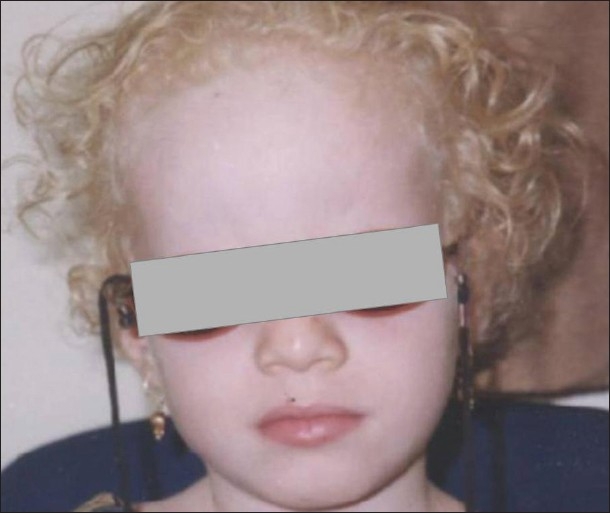Playlist
Show Playlist
Hide Playlist
Albinism (Achromasia)
-
Slides Dermatology Other Skin Disorders V2.pdf
-
Download Lecture Overview
00:01 Albinism. 00:03 Albinism is a genetic issue and the genetic issue is the fact that you’re not able to properly produce melanin. 00:10 So therefore, you'll have an extremely fair complected, to the point where the patient is almost powder or white-like. 00:18 Typically, the ocular and skin disease occurs together in an autosomal recessive pattern. 00:24 There will be different types of albinism that we’ll take a look at. 00:27 And in these patients, keep in mind that they are fair complected to the point where they do not have proper production of melanin. 00:35 So what does that mean to you? The subtypes of albinism: If you take a look at the patient here, we have a child whose skin is absolutely hypopigmented. 00:46 Extreme fair complexion. 00:49 If you were to take a look at the iris, they would also be extremely -- well, it wouldn’t be pigmented. 00:54 In such patients, you need to make sure that exposure to sun rays is limited, if at all removed completely. 01:03 The subtypes: In type I, it would behoove you to memorize that there is a tyrosinase deficiency. 01:11 If you do not have this enzyme, then you’re not able to properly form your melanin. 01:15 In type II, it’s a P gene mutation, which actually is the most type of albinism type II. 01:23 Type III, with mutation once again in your tyrosinase-related protein-1, TRP1. 01:30 So if I were you, I’d quickly just make sure that you understand or memorize tyrosinase as being deficient or a problem and the P gene that may be mutated as being the most common type of pathogenesis. 01:45 The associations here would be the ocular abnormalities such as nystagmus and decreased visual acuity. 01:50 So apart from the fact that the iris isn’t properly pigmented, there might be inappropriate eye movement as well. 01:57 If you take a look at the hair of our patient here, light hair, milky white, readily apparent upon observation. 02:07 The thing that you want to worry about is avoidance of your sun and by that I mean UV rays. 02:14 Therefore, the risk of cancer hopefully will be limited or perhaps restricted. 02:21 More exposure to the UV rays, the increased risk of skin cancer of whatever type.
About the Lecture
The lecture Albinism (Achromasia) by Carlo Raj, MD is from the course Other Skin Diseases.
Included Quiz Questions
Patients with albinism have what type of enzyme deficiency?
- Tyrosinase deficiency
- Collagen type V alpha 1 chain deficiency
- Ornithine transcarbamylase deficiency
- Phenylalanine hydroxylase deficiency
- Alpha-galactosidase deficiency
Customer reviews
2,0 of 5 stars
| 5 Stars |
|
0 |
| 4 Stars |
|
0 |
| 3 Stars |
|
0 |
| 2 Stars |
|
1 |
| 1 Star |
|
0 |
The lecture was a little hard to follow. The speaker seems a little nervous.




